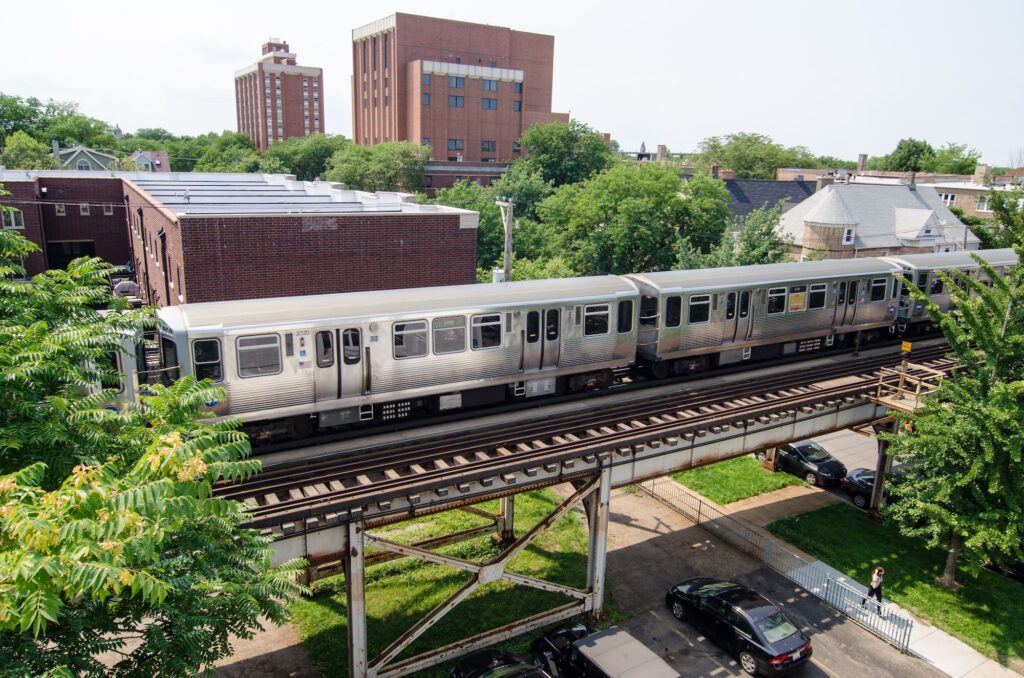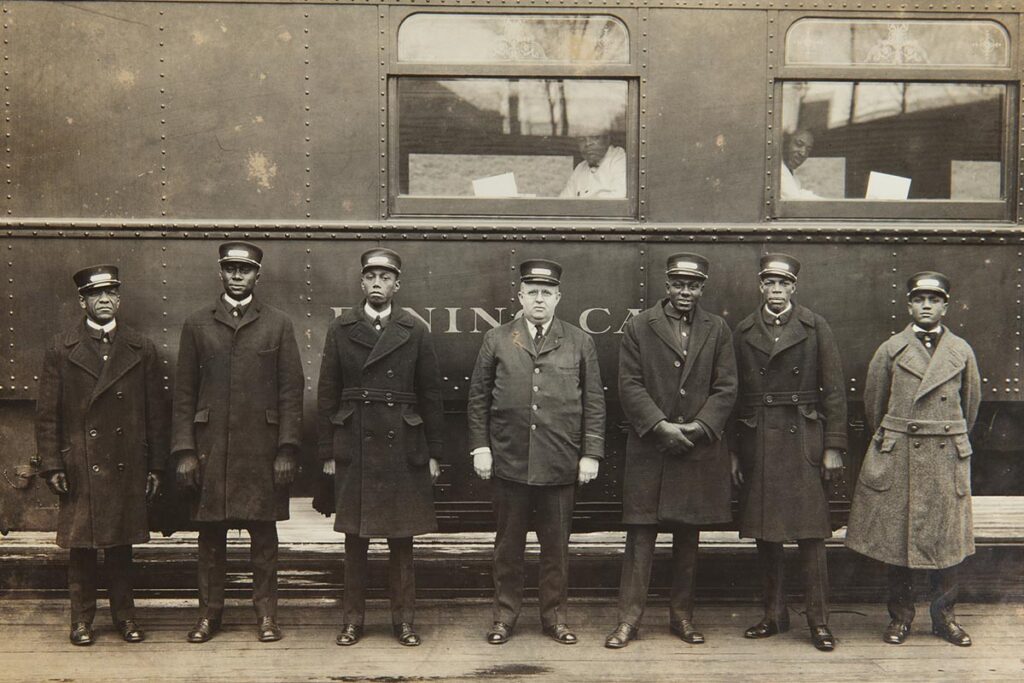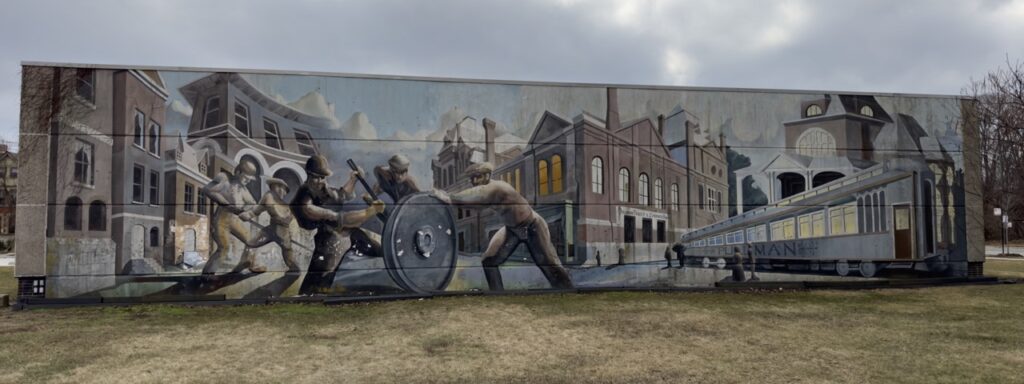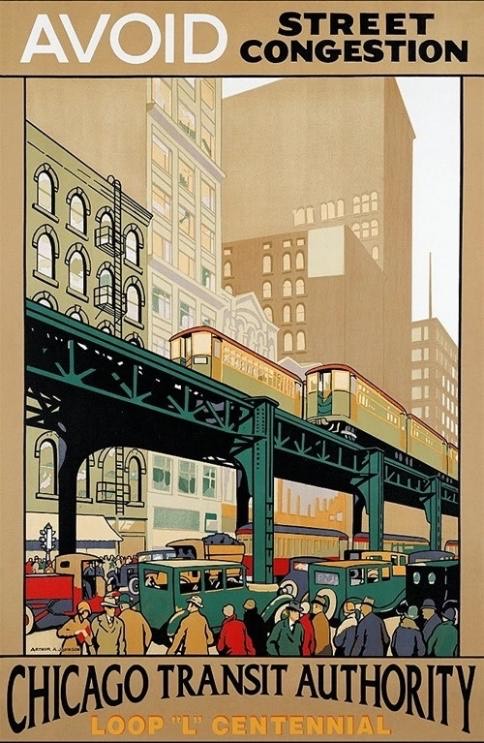
2020-12-27 Amtrak/IDTX 4629 and Siemens Venture Trainset, Chicago Yard, Chicago, Illinois, Marc Glucksman/River Rail Photo.
Recently, the newly elected Mayor Brandon Johnson aided the CTA and will soon receive about $2 billion in federal funding for the $3.6 billion project, to expand the south section of the Red Line. The funds come from the $1 trillion bipartisan infrastructure deal passed by President Joe Biden in 2021. Officials have said the construction will create about 25,000 jobs and ignite $7 billion into the economy.
The railroads have always been at the heart of Chicago since its inception, the growth of the city and the railroad industry couldn’t have achieved success on their own. Chicago is the most important railroad center in North America. A massive amount of rail lines diverge from so many directions from Chicago than any other city. Chicago only trails New York City in terms of volume of commuter rail passengers carried per day. The city of Chicago has long been essential to the crucial interchange point for freight traffic among the nation’s major railroads and is the central hub for Amtrak.

The first established railroad in Chicago was the Galena & Chicago Union, which was founded in 1836 and built tracks to the lead mines at Galena in northwestern Illinois. The first tracks were laid in 1848 to a point of interest known as Oak Ridge (now known as Oak Park).
Private enterprise played a role in developing Chicago’s early urban transportation systems and, naturally, along with the development of city. By 1900, there were about 17 independent street railway companies and a number of interurbans with each one having their own stations, stops, equipment, and fares. As opposing transit companies laid surface and elevated rail tracks through neighborhoods and undeveloped areas, the city’s authority to grant franchise permits and pass ordinances achieved minimal control. Since the choices made by the transit owners, both centralized and decentralized urban development in the late 19th and early 20th centuries can be attributed to them.

According to the National Museum of American History, The Chicago and South Side Rapid Transit Railroad Company were the first to successfully obtain right-of-way and permission to build an elevated passenger railway in Chicago. The Alley “‘L” opened for regular service on June 6, 1892, which was constructed over alleys through the South side. The Lake Street “L” began servicing the West side on November 6, 1893, followed by the Metropolitan West Side Elevated Railroad Company on May 6, 1895. The final “L” line, operated by the Northwestern Elevated Railroad Company, didn’t begin passenger service until December 31, 1899.

Other railroads finished their lines of track linking Chicago with the wheat fields of northern Illinois and southern Wisconsin. The cities of Detroit, Cleveland, Cincinnati, New Orleans, St. Louis, Kansas City, Omaha, and St. Paul. Railroads were exceptionally important as shippers of grain and livestock, when railroads soon completed lines of track connecting with Chicago, they helped established the Chicago become a major market in the grain and meatpacking industries. Chicago became the center for manufacturing freight cars, passenger cars (Like the Pullman Company), and diesel locomotives (Electro-Motive Division of General Motors, in La Grange ).

Photo courtesy of the A. Philip Randolph Pullman Porter Museum

Chicago and the railroads have come a long way, they are just as essential now as they were then. Many debates about heavy car dependence in this country and helping low-income residents with transportation, are conversions that circle back to trains. Officials spoke postivilty about the CTA and the $3.6 billion project, “About one quarter of those who live along the Red Line extension corridor are low-income, and 18 percent are unemployed…People here have been underserved by public transportation,” said Nuria Fernandez, administrator for the Federal Transit Administration. While a majority of the country has become car depended, there are still those who are unable to afford a vehicle, let alone maintain one. Making public transportation the more likely choice for transportation for low-income residents.

The topic of cost-benefit analysis of car dependency in this country, can be a discussion for another time. But…the case still stands, trains are cool and would be as equally cool to see the train system expand further, making trains the heart of transportation in the U.S. and the beating heart of Illinois.








